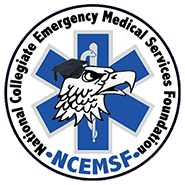
Every year during the second full week of November, the National Collegiate Emergency Services Foundation recognizes on-campus EMTs for National Collegiate EMS Week. From Nov. 7 through Nov. 13, the College honors Hamilton College Emergency Medical Services (HCEMS) for their unparalleled dedication to the campus community.
HCEMS has 22 student members this year, 20 of whom are on campus this semester. Nine seniors, seven juniors and six sophomores make up HCEMS. For seven of them, fall 2011 has been their first semester as an EMT. The rookies are Phil Conkling ’14, Jenna Durkee ’14, Tara Hansen ’14, Rob Hayden ’14, Jackie Jasuta ’14, James Stanell ’14 and Alvin Wu ’13.
Veteran members are Ethan Ayres ’13, Jamie Azdair ’13, Hailey Bobin ’12, Kayla Brenden ’12, Lauren Brousseau ’12, Sarah Dreyer-Oren ‘12, Matthew Farrington ’12, Jeannie Folan ’12, Melanie Hundt ’13, James Kruger ‘12, Sara M. Miller ’12, Conner Polet ’13, Lindsay Shankman ’12, Susannah Spero ’13, and Ashley Sutton ’13.
Each week, HCEMS members find themselves on duty for one or two shifts. Weekend shifts are taken on a rotating basis, and members typically work two weekend shifts each month. Three EMTs are on call during any given shift. Weekday shifts run from noon to 10 p.m., and weeknight shifts last from 10 p.m. until noon the next day. Over the weekend, daytime shifts start at noon and last until 7 p.m., when another trio of HCEMS members pick up the nighttime shift, which runs until the following noon. Weekly hours vary from 20-30, depending on whether a member is scheduled for a weekend shift or not.
Few, if any, members of student organizations can claim that they commit so much time to a single activity. But, as Director of Emergency Medical Services Diann Lynch pointed out, “HCEMS isn’t a student organization; it is a New York State organization, with Hamilton College in its name.”
“It’s not like a club,” Conner Polet ’13 added. “With a club, you can be as involved—or not involved—as you want to be.”
No one can simply sign up to be an EMT at Hamilton. There is a thorough application process, which Lynch runs—consisting of one-on-one and group interviews, as well as cooperative tasks.
“We are very selective,” said Lynch.
Once accepted, students must enroll in a certification course. Classes meet for four-hour sessions, twice a week, for a full semester. There are six Saturdays on which the EMTs-to-be must attend labs, where they work on practical skills in simulated emergency situations.
After they become certified, the EMTs have several required tasks, in addition to covering shifts. Weekly quizzes ensure that they have been keeping up with their skills, and continuing education courses enable the EMTs to expand their knowledge of basic life support. Certification is far from the end of the learning process.
HCEMS is an organization comprised entirely of volunteer EMTs. Although the work the EMTs do is more than worthy of remuneration, the members of HCEMS think that the lack of compensation is an important part of their job.
“It’s good that it isn’t a paid position,” said Kayla Brenden ’12. “You get the people who want to do it.”
“We do it just because we want to help people,” said Sara M. Miller ’13. “I’ve always wanted to be that person in a situation who people could rely on.”
And, indeed, the campus community does depend on the presence of the EMTs. HCEMS responds to about 115-130 calls per semester—a diverse array of medical and trauma emergencies.
“It’s empowering,” Hayden said. “Before I became an EMT, there were certain instances where I felt as though I was limited by my lack of medical knowledge.”
“Being an EMT has helped me with self-confidence and given me a greater feeling of self-worth,” Durkee added.
The EMTs have experienced several positive side effects since joining HCEMS, one of which has been the formation of several close friendships.
Hansen believes that the experiences the EMTs share when they are on duty have a bearing on the tight-knit quality of the group. “You can’t talk about what happens at a call with anyone else,” she said.
Jeannie Folan ’12 explained the group’s tendency to unite spontaneously: “Sometimes, a few of us will be sitting in Commons, and then a few more of us will show up. All of a sudden, we’ll all be eating together.”
“It’s important to have fun,” said Miller. “Calls are very serious, but you need humor to get through them.”
Comic relief and bonding activities are essential counterbalances to the stress that their job entails, but the EMTs know very well how to transition into work mode when duty calls.
“That is something that really struck me as a rookie,” said Conkling. “It was remarkable to me how we could be joking around, and then, all of a sudden, the vets would get really serious. You pick up on it quickly.”
When asked about the challenges of being an EMT at Hamilton, Miller said, “The fact that we are EMT-ing friends and classmates is probably the hardest part.”
Folan agreed: “I’d have to say the rumor mill. People come up with crazy stories to explain things that have happened, but you can’t correct them.”
Despite the difficulties that they sometimes encounter, the EMTs genuinely love what they do and find their work rewarding.
James Kruger ’12 said, “The great thing about being an EMT is that you have an immediate impact on the community. When you’re taking college courses, you’re studying for a future impact you might make, but the EMTs are able to put their studies into practice right away.”
The instant response that HCEMS provides for the Hamilton community in times of need is the reason we take this week to pay tribute to the EMTs.
